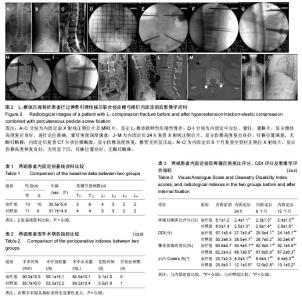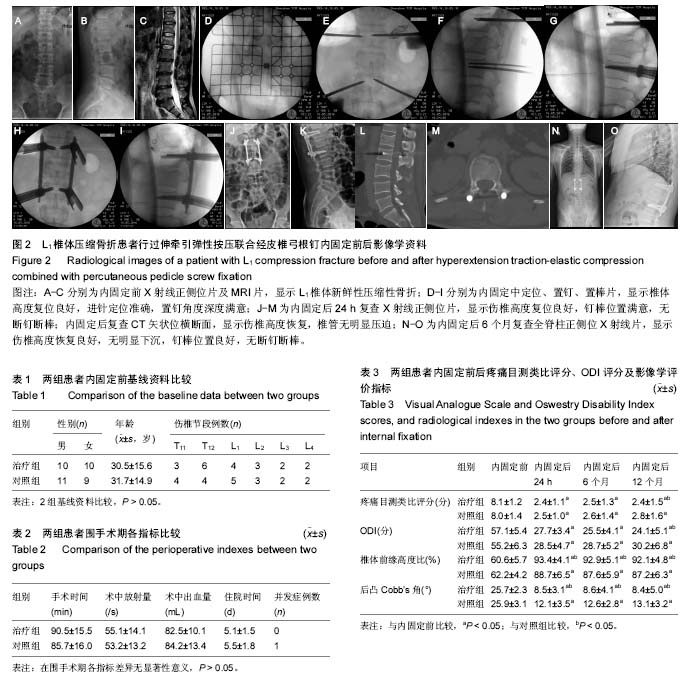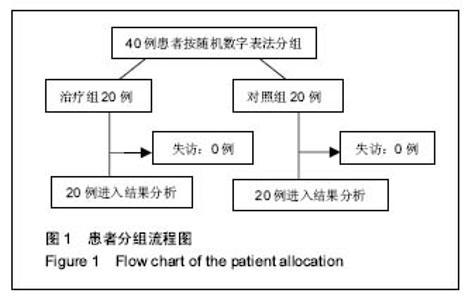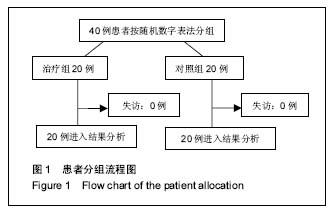Chinese Journal of Tissue Engineering Research ›› 2017, Vol. 21 ›› Issue (23): 3676-3681.doi: 10.3969/j.issn.2095-4344.2017.23.012
Previous Articles Next Articles
Biomechanical properties of hyperextension traction-elastic compression combined with percutaneous pedicle screw fixation for thoracolumbar fractures
Feng Hua-long, Lai Ju-yi, Huang Fei-qiang
- the Fourth Clinical Medical College of Guangzhou University of Chinese Medicine, Shenzhen 518033, Guangdong Province, China
-
Online:2017-08-18Published:2017-09-01 -
About author:Feng Hua-long, Studying for master’s degree, the Fourth Clinical Medical College of Guangzhou University of Chinese Medicine, Shenzhen 518033, Guangdong Province, China
CLC Number:
Cite this article
Feng Hua-long, Lai Ju-yi, Huang Fei-qiang. Biomechanical properties of hyperextension traction-elastic compression combined with percutaneous pedicle screw fixation for thoracolumbar fractures [J]. Chinese Journal of Tissue Engineering Research, 2017, 21(23): 3676-3681.
share this article

2.3 围手术期各指标参数比较 见表2。2组在围手术期手术时间、术中放射量、术中失血量、住院时间、并发症上比较差异无显著性意义(P > 0.05)。 2.4 各时间段疼痛目测类比评分和ODI评分比较 见表3。2组在内固定前目测类比评分及ODI评分与内固定后比差异有显著性意义(P < 0.05),内固定后24 h、6个月目测类比评分及ODI评分治疗组与对照组相比差异无显著性意义,内固定后12个月2组比较,差异有显著性意义(P < 0.05)。 2.5 各时间段伤椎矢状位后凸Cobb’s角和椎体前缘高度百分比比较 见表3。2组内固定后伤椎矢状位Cobb’s角、椎体前缘高度百分比均优于术前(P < 0.05)。治疗组内固定后24 h、6,12个月各时间段伤椎矢状位Cobb’s角、椎体前缘高度百分比均优于对照组。 2.6 并发症 2组患者均未发生内固定后感染,随访时间为12个月,均未发生材料宿主反应及断钉断棒等并发症。 2.7 典型病例介绍 患者,男,56岁,因“高处摔倒致腰部疼痛,活动受限1周。”由门诊拟“L1椎体压缩骨折”于2016年5月13日12:58平车推入入院。症见:患者神志清,精神可,诉腰部疼痛,活动受限,无双下肢放射痛及麻木,无大小便障碍。查体:脊柱胸腰椎段未见后凸畸形,未见皮肤瘀斑,L1椎体棘突、棘突旁压痛、叩击痛,无下肢放射痛,脊椎活动受限,脊柱纵扣痛阳性,双下肢末梢血运感觉趾动未见异常,双下肢膝、踝反射存在,病理反射未引出,见图2。 "

| [1] 张亚林,李维,王盛海,等.切开复位与经皮椎弓根钉内固定治疗未脱位单节段胸腰椎爆裂骨折的比较研究[J].中国骨与关节损伤杂志,2016,31(5):511-512.[2] 赵武斌.微创经皮椎弓根钉内固定及植骨手术治疗胸腰椎骨折[J]. 中国继续医学教育,2016,8(5)91-93.[3] 李智,朱庭标,张勇,等. 经皮椎弓根钉技术治疗胸腰椎骨折[J].中国骨与关节损伤杂志,2013,28(9):851-2.[4] 刘洪,王文军. 经皮椎弓根钉治疗胸腰椎骨折的临床进展[J].中国矫形外科杂志,2006,14(12):929-31.[5] 熊永发,宁旭,闫飞,等. 经皮椎弓根钉内固定与开放手术内固定治疗老年胸腰椎骨折的疗效对比[J].中国老年学杂志,2016 , 36(4):916-7.[6] 孙涛. 胸腰椎压缩性骨折患者采用经皮椎弓根钉内固定治疗的临床体会[J].世界最新医学信息文摘(连续型电子期刊),2015, (58): 93.[7] 国家中医药管理局.中医病症诊断疗效标准[J].南京:南京大学出版社,1994,176.[8] 何升华,马笃军,余伟吉,等. 过伸牵引弹性按压法联合经皮椎体成形术治疗骨质疏松性胸腰椎压缩骨折的临床研究[J].中医正骨,2014,26(3):25-9.[9] Wang HW, Li CQ, Zhou Y, et al.Percutaneous pedicle screw fixation through the pedicle of fractured vertebra in the treatment of type A thoracolumbar fractures using Sextant system: an analysis of 38 cases. Chin J Traumatol. 2010; 13(3):137-45.[10] 李建江,楚戈,杨涛,等. 经皮椎间孔镜下TESSYS技术修复腰椎固定融合后邻近节段退行性变[J].中国组织工程研究, 2015, 19(26):4186-90.[11] 任佳彬,刘鹏飞,孙兆忠,等. 椎间孔镜术与传统椎板间开窗术治疗青少年腰椎间盘突出症的比较研究[J].中国矫形外科杂志, 2015,(21):1938-42.[12] 梁慕华,蒋劲松,周树权,等. 经皮微创椎弓根内固定治疗胸腰椎骨折[J].中国现代医学杂志,2015,20(25):82-86.[13] 林章旺,张毅,孔祥亮,等. 经皮椎弓根钉内固定术治疗胸腰椎骨折[J].中国伤残医学,2012,20(10):45-6.[14] Li K, Li Z, Ren X, et al. Effect of the percutaneous pedicle screw fixation at the fractured vertebra on the treatment of thoracolumbar fractures. Int Orthop. 2016 ;40(6):1103-1110.[15] Lei L,Guang-wang L,Chao M. [Comparison of the clinical safety and efficacies of percutaneous pedicle screw fixation and open pedicle screw fixation for thoracolumbar fracture: a meta-analysis]. Zhongguo Gu Shang. 2016;29(3):220-227.[16] 何二兴,郭倞,崔基浩,等.腰椎退行性变的经皮椎弓根螺钉固定结合微创腰椎间融合术治疗[J].中国骨与关节杂志,2015,4(8):632-638.[17] 陈有昌,饶海军.经皮椎弓根钉内固定术治疗胸腰椎骨折临床疗效观察[J].现代诊断与治疗,2016,27(7):1196-1197.[18] 董志辉,董志凯,徐建杰,等.UPASS Ⅱ经皮椎弓根钉内固定治疗不稳定胸腰椎骨折的疗效分析[J].中国骨与关节损伤杂志, 2016,31(7):733-735.[19] 梁和胜,肖立军,邓德礼.经皮椎弓根钉内固定联合椎体间融合术治疗老年腰椎滑脱的疗效和安全性分析[J].中国骨与关节损伤杂志,2016,31(3):238-240.[20] 秦耀维,李树林,徐世稳.3种方法治疗腰椎骨质疏松性椎体压缩骨折的疗效比较分析[J].中国骨与关节损伤杂志,2016,31(7):742-743.[21] 史航,朱裕成,马军,等.微创经皮椎弓根钉内固定联合伤椎椎体植骨治疗胸腰椎骨折的疗效分析[J].中国骨与关节损伤杂志,2016, 31(5):513-514.[22] 孙瑞轩.经皮椎弓根钉治疗椎体骨折的对比研究[J].中国医药指南,2016,14(24):105.[23] 卫秀洋,陈勇忠,王金星,等.微创经皮椎弓根置钉治疗无神经损伤胸腰椎骨折[J].临床骨科杂志,2016,29(2):137-140.[24] 许益文,郑勇,陈明,等.长臂单轴与Sextant两种经皮椎弓根钉内固定治疗单节段胸腰椎骨折的对比研究[J].生物骨科材料与临床研究,2016,13(5):36-38.[25] 杨常用,徐志刚,刘建标.胸腰椎骨折闭合复位经皮椎弓根钉内 固定及椎体植骨术的临床治疗效果研究[J].实用骨科杂志,2016, 22(7):623-626.[26] 尚福亮,陈华,李斌,等. 30例经皮微创脊柱椎弓根钉棒系统内固定治疗胸腰椎骨折的临床疗效分析[J].中国实用医药, 2016, 11(33): 75-76.[27] Cui S, Busel GA, Puryear AS. Temporary Percutaneous Pedicle Screw Stabilization Without Fusion of Adolescent Thoracolumbar Spine Fractures. J Pediatr Orthop. 2016; 36(7):701-708[28] Fu Z,Zhang X,Shi Y,et al.Comparison of Surgical Outcomes Between Short-Segment Open and Percutaneous Pedicle Screw Fixation Techniques for Thoracolumbar Fractures.Med Sci Monit.2016;22:3177-3185.[29] 曾至立,程黎明.经皮椎弓根钉内固定治疗胸腰椎骨折[C].第四届长三角地区创伤学术大会暨2014年浙江省创伤学术年会,杭州: 2014. [30] 张洪,张海龙,赵国梁,等.微创技术在胸腰椎骨折中的应用[J].中国骨与关节损伤杂志,2016,31(3):293-294.[31] 周国进,曾有文,钟声涛.微创经皮椎弓根钉内固定治疗胸腰椎压缩性骨折的临床效果[J].中国当代医药,2016,23(32):56-58.[32] 李琳,李峰,陈华.微创经皮与Wiltse入路椎弓根钉内固定治疗胸腰椎骨折的疗效比较[J].中国骨与关节损伤杂志,2017,32(1): 18-21.[33] 杨剑,杨函,王松,等.微创减压联合经皮固定与传统开放手术治疗伴神经损害胸腰椎骨折的疗效比较[J].临床医药文献电子杂志, 2017,(5):852-853.[34] 顾勇杰,孙韶华,李国庆,等.经皮与经肌间隙椎弓根钉内固定治疗胸腰椎骨折的疗效比较[J].中国骨与关节损伤杂志,2015, 30(9): 910-913.[35] Chopko BW.Percutaneous thoracolumbar decompression combined with percutaneous pedicle screw fixation and fusion: a method for treating spinal degenerative pain in a biplane angiography suite with the avoidance of general anesthesia. J Spine Surg. 2016;2(2):122-127.[36] Gazzeri R.Percutaneous Pedicle Screw Fixation Technique in the Thoracic and Lumbar Spine-Tips and Tricks. Surg Technol Int. 2016;28:303-310.[37] Gelbard RB,Ahmad FU,Mobbs RJ,et al.Outcomes of percutaneous pedicle screw fixation for spinal trauma and tumours.BMJ Case Rep.2016;23:88-94.[38] Ming FL,Jun ZY,Jun Z,et al. Minimally invasive percutaneous pedicle screw fixation for the treatment of thoracolumbar fractures and posterior ligamentous complex injuries. 2012 ; 44(6):851-854.[39] Liu L,Liu GW,Ma C.Comparison of the clinical safety and efficacies of percutaneous pedicle screw fixation and open pedicle screw fixation for thoracolumbar fracture: a meta-analysis.Zhongguo Gu Shang.2016;29(3):220-227.[40] Mobbs RJ,Phan K.History of Retractor Technologies for Percutaneous Pedicle Screw Fixation Systems. Orthop Surg. 2016;8(1):3-10.[41] Orita S,Inage K,Kubota G,et al.One-Year Prospective Evaluation of the Technique of Percutaneous Cortical Bone Trajectory Spondylodesis in Comparison with Percutaneous Pedicle Screw Fixation: A Preliminary Report with Technical Note. J Neurol Surg A Cent Eur Neurosurg. 2016;77(6): 531-537.[42] Rhh A,Goni V,Dhatt S,et al.Comment on "The Surgical Management of Traumatic Lower Cervical Spondylolisthesis with Posterior Percutaneous Pedicle Screw Fixation". Asian Spine J. 2016;10(3):610. [43] Versteeg AL,Verlaan JJ,de Baat P,et al.Complications After Percutaneous Pedicle Screw Fixation for the Treatment of Unstable Spinal Metastases. Ann Surg Oncol. 2016;23(7): 2343-2349. [44] Zhang W,Li H,Zhou Y,et al.Minimally Invasive Posterior Decompression Combined With Percutaneous Pedicle Screw Fixation for the Treatment of Thoracolumbar Fractures With Neurological Deficits: A Prospective Randomized Study Versus Traditional Open Posterior Surgery.Spine (Phila Pa 1976).2016;41 Suppl 19:B23-b9.[45] 郭广铭. 经皮椎弓根钉内固定治疗胸腰椎压缩性骨折[J].中国现代药物应用,2015,9(14):43-4.[46] 王文军,陆凌云,宋西正,等. 经皮椎弓根钉外固定系统联合椎体成形术治疗胸腰椎骨折[J].中国脊柱脊髓杂志,2006,16(9): 663-666..[47] Changqing L,Li H,Zhang W.Response letter to 'Minimally invasive posterior decompression combined with percutaneous pedicle screw fixation for the treatment of thoracolumbar fractures with neurological deficits'.Spine (Phila Pa 1976),2017.[48] Hsieh CS,Lee HC,Oh HS,et al.Anterior lumbar interbody fusion with percutaneous pedicle screw fixation for multiple-level isthmic spondylolisthesis.Clin Neurol Neurosurg.2017;158:49-52.[49] Korovessis P.Percutaneous pedicle screw fixation plus kyphoplasty for thoracolumbar fractures A2, A3 and B2.BioMed research international.2017;26(5):1492-1498.[50] Mpountogianni E,Syrimpeis V,Li L,et al.Treatment of Thoracolumbar Fractures by Percutaneous Pedicle Screw Fixation Technique Combined with Three-step Reduction. J Neurol Surg A Cent Eur Neurosurg. 2017;78(3):231-237. |
| [1] | Yao Xiaoling, Peng Jiancheng, Xu Yuerong, Yang Zhidong, Zhang Shuncong. Variable-angle zero-notch anterior interbody fusion system in the treatment of cervical spondylotic myelopathy: 30-month follow-up [J]. Chinese Journal of Tissue Engineering Research, 2022, 26(9): 1377-1382. |
| [2] | Jiang Huanchang, Zhang Zhaofei, Liang De, Jiang Xiaobing, Yang Xiaodong, Liu Zhixiang. Comparison of advantages between unilateral multidirectional curved and straight vertebroplasty in the treatment of thoracolumbar osteoporotic vertebral compression fracture [J]. Chinese Journal of Tissue Engineering Research, 2022, 26(9): 1407-1411. |
| [3] | Yu Chengxiang, Liu Lehong, Li Wenbo, Chen Jinshi, Ran Chunlei, Wang Zhongping. Correlation between spine-pelvic sagittal parameters and prognosis of vertebroplasty in the treatment of thoracolumbar osteoporotic vertebral compression fractures [J]. Chinese Journal of Tissue Engineering Research, 2022, 26(9): 1412-1417. |
| [4] | Xue Yadong, Zhou Xinshe, Pei Lijia, Meng Fanyu, Li Jian, Wang Jinzi . Reconstruction of Paprosky III type acetabular defect by autogenous iliac bone block combined with titanium plate: providing a strong initial fixation for the prosthesis [J]. Chinese Journal of Tissue Engineering Research, 2022, 26(9): 1424-1428. |
| [5] | Li Wei, Zhu Hanmin, Wang Xin, Gao Xue, Cui Jing, Liu Yuxin, Huang Shuming. Effect of Zuogui Wan on bone morphogenetic protein 2 signaling pathway in ovariectomized osteoporosis mice [J]. Chinese Journal of Tissue Engineering Research, 2022, 26(8): 1173-1179. |
| [6] | Wang Jing, Xiong Shan, Cao Jin, Feng Linwei, Wang Xin. Role and mechanism of interleukin-3 in bone metabolism [J]. Chinese Journal of Tissue Engineering Research, 2022, 26(8): 1260-1265. |
| [7] | Xiao Hao, Liu Jing, Zhou Jun. Research progress of pulsed electromagnetic field in the treatment of postmenopausal osteoporosis [J]. Chinese Journal of Tissue Engineering Research, 2022, 26(8): 1266-1271. |
| [8] | Wu Bingshuang, Wang Zhi, Tang Yi, Tang Xiaoyu, Li Qi. Anterior cruciate ligament reconstruction: from enthesis to tendon-to-bone healing [J]. Chinese Journal of Tissue Engineering Research, 2022, 26(8): 1293-1298. |
| [9] | An Weizheng, He Xiao, Ren Shuai, Liu Jianyu. Potential of muscle-derived stem cells in peripheral nerve regeneration [J]. Chinese Journal of Tissue Engineering Research, 2022, 26(7): 1130-1136. |
| [10] | Fang Xiaolei, Leng Jun, Zhang Chen, Liu Huimin, Guo Wen. Systematic evaluation of different therapeutic effects of mesenchymal stem cell transplantation in the treatment of ischemic stroke [J]. Chinese Journal of Tissue Engineering Research, 2022, 26(7): 1085-1092. |
| [11] | Hou Jingying, Guo Tianzhu, Yu Menglei, Long Huibao, Wu Hao. Hypoxia preconditioning targets and downregulates miR-195 and promotes bone marrow mesenchymal stem cell survival and pro-angiogenic potential by activating MALAT1 [J]. Chinese Journal of Tissue Engineering Research, 2022, 26(7): 1005-1011. |
| [12] | Liang Xuezhen, Yang Xi, Li Jiacheng, Luo Di, Xu Bo, Li Gang. Bushen Huoxue capsule regulates osteogenic and adipogenic differentiation of rat bone marrow mesenchymal stem cells via Hedgehog signaling pathway [J]. Chinese Journal of Tissue Engineering Research, 2022, 26(7): 1020-1026. |
| [13] | Cui Xing, Sun Xiaoqi, Zheng Wei, Ma Dexin. Huangqin Decoction regulates autophagy to intervene with intestinal acute graft-versus-host disease in mice [J]. Chinese Journal of Tissue Engineering Research, 2022, 26(7): 1057-1062. |
| [14] | Wu Weiyue, Guo Xiaodong, Bao Chongyun. Application of engineered exosomes in bone repair and regeneration [J]. Chinese Journal of Tissue Engineering Research, 2022, 26(7): 1102-1106. |
| [15] | Zhou Hongqin, Wu Dandan, Yang Kun, Liu Qi. Exosomes that deliver specific miRNAs can regulate osteogenesis and promote angiogenesis [J]. Chinese Journal of Tissue Engineering Research, 2022, 26(7): 1107-1112. |
| Viewed | ||||||
|
Full text |
|
|||||
|
Abstract |
|
|||||

